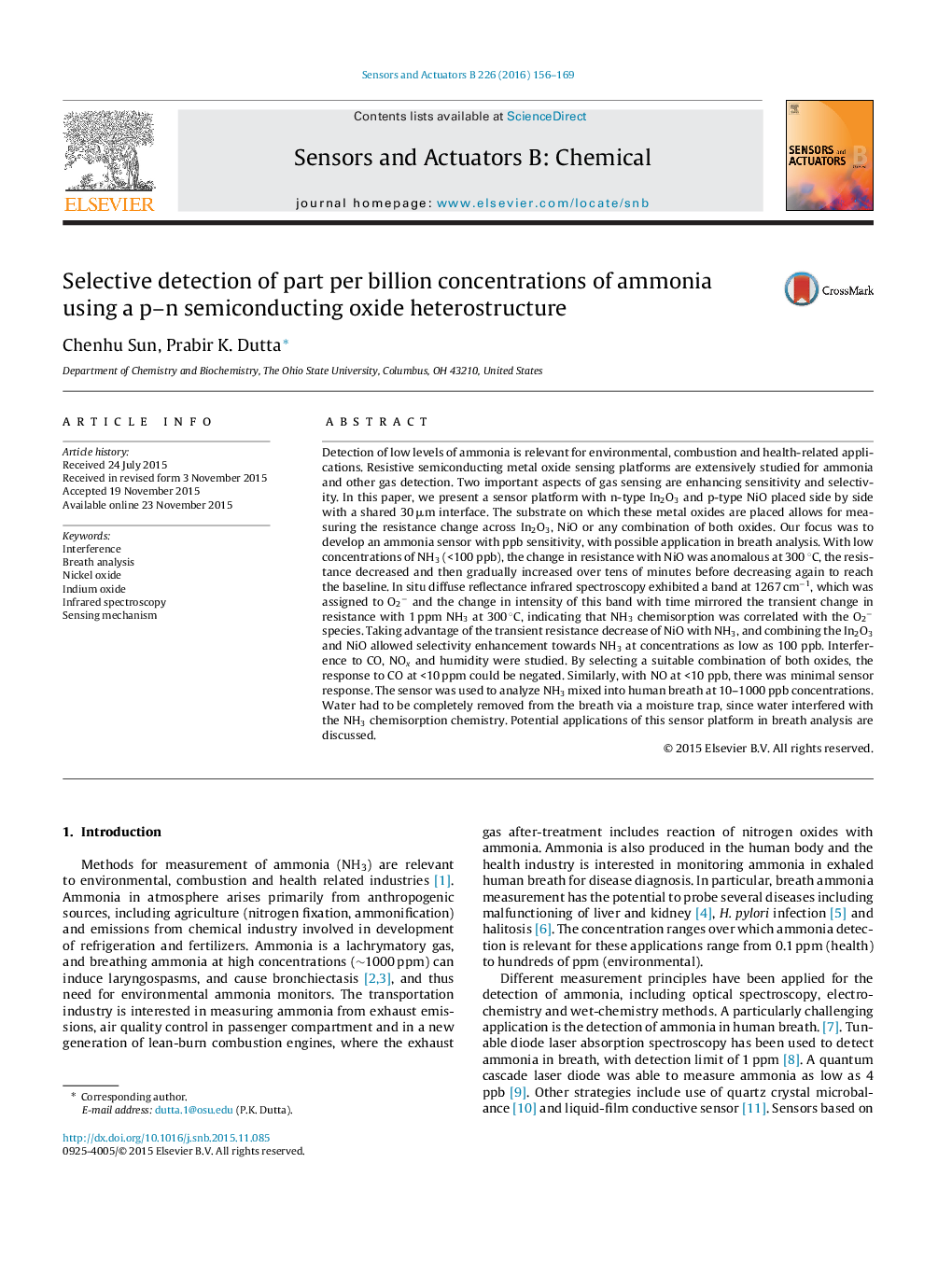| کد مقاله | کد نشریه | سال انتشار | مقاله انگلیسی | نسخه تمام متن |
|---|---|---|---|---|
| 7144735 | 1462065 | 2016 | 14 صفحه PDF | دانلود رایگان |
عنوان انگلیسی مقاله ISI
Selective detection of part per billion concentrations of ammonia using a p-n semiconducting oxide heterostructure
دانلود مقاله + سفارش ترجمه
دانلود مقاله ISI انگلیسی
رایگان برای ایرانیان
کلمات کلیدی
موضوعات مرتبط
مهندسی و علوم پایه
شیمی
شیمی آنالیزی یا شیمی تجزیه
پیش نمایش صفحه اول مقاله

چکیده انگلیسی
Detection of low levels of ammonia is relevant for environmental, combustion and health-related applications. Resistive semiconducting metal oxide sensing platforms are extensively studied for ammonia and other gas detection. Two important aspects of gas sensing are enhancing sensitivity and selectivity. In this paper, we present a sensor platform with n-type In2O3 and p-type NiO placed side by side with a shared 30 μm interface. The substrate on which these metal oxides are placed allows for measuring the resistance change across In2O3, NiO or any combination of both oxides. Our focus was to develop an ammonia sensor with ppb sensitivity, with possible application in breath analysis. With low concentrations of NH3 (<100 ppb), the change in resistance with NiO was anomalous at 300 °C, the resistance decreased and then gradually increased over tens of minutes before decreasing again to reach the baseline. In situ diffuse reflectance infrared spectroscopy exhibited a band at 1267 cmâ1, which was assigned to O2â and the change in intensity of this band with time mirrored the transient change in resistance with 1 ppm NH3 at 300 °C, indicating that NH3 chemisorption was correlated with the O2â species. Taking advantage of the transient resistance decrease of NiO with NH3, and combining the In2O3 and NiO allowed selectivity enhancement towards NH3 at concentrations as low as 100 ppb. Interference to CO, NOx and humidity were studied. By selecting a suitable combination of both oxides, the response to CO at <10 ppm could be negated. Similarly, with NO at <10 ppb, there was minimal sensor response. The sensor was used to analyze NH3 mixed into human breath at 10-1000 ppb concentrations. Water had to be completely removed from the breath via a moisture trap, since water interfered with the NH3 chemisorption chemistry. Potential applications of this sensor platform in breath analysis are discussed.
ناشر
Database: Elsevier - ScienceDirect (ساینس دایرکت)
Journal: Sensors and Actuators B: Chemical - Volume 226, April 2016, Pages 156-169
Journal: Sensors and Actuators B: Chemical - Volume 226, April 2016, Pages 156-169
نویسندگان
Chenhu Sun, Prabir K. Dutta,